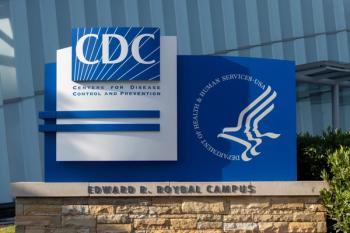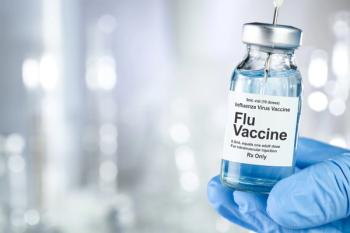
- November 2017 Immunization Supplement 0
Pandemic Vaccine Planning: Lessons Learned and Preparing for the Future
The variations between seasonal and pandemic influenza necessitate the use of different approaches when planning vaccination delivery within the pharmacy.
Pandemic Vaccine Planning: Lessons Learned and Preparing for the Future
The variations between seasonal and pandemic influenza necessitate the use of different approaches when planning vaccination delivery within the pharmacy. The obvious disparities are that seasonal influenza occurs at about the same time every year, is somewhat predictable with regard to viral composition from which the vaccine is prepared, and targeted high-risk groups do not vary greatly from year to year. In contrast, pandemic influenza is highly unpredictable with respect to virulence, at-risk populations, and when it will occur.1 The key to planning is to remember that that the ordering, distribution, and tracking of pandemic influenza vaccine follow a different path. Prior to the 2009 influenza A (H1N1) pandemic, there had not been a similar flu outbreak in the United States for more than 40 years.2 Pandemic influenza monitoring and preparation have become a focus of the CDC and the Department of Health and Human Services. Utilizing pharmacists as resources in influenza vaccine response lies in the foundation set within seasonal influenza vaccinations. Pharmacists have become an integral part of the seasonal influenza vaccination programs, with 1 in 4 adults receiving the flu vaccine at a pharmacy (Figure). 3,4 Are pharmacists ready for the next influenza pandemic? Evaluating the past pandemic, understanding the progress over the last 5 years, and recognizing arrangements that can be put in place now will all help to ensure that pharmacists are, in fact, prepared.
Pharmacists’ Impact in the 2009 H1N1 Pandemic
The H1N1 outbreak occurred at a time when pandemic planning and vaccine distribution were provided primarily through health departments, hospitals, physicians’ offices, clinics, schools, and workplaces.5 At that time, many pharmacies were just beginning to incorporate vaccinations into their daily workflow. Even though most pharmacies did not receive the H1N1 vaccine until December 2009—2 months after its availability—pharmacists were still able to provide approximately 10% of all adult H1N1 vaccinations.6 The need for preparation and training was identified in a post pandemic survey, the results revealing that only 19% of the pharmacists evaluated had undergone any type of training to handle such a situation.7 Two case reports showing successful pharmacy—public health collaboration for H1N1 in 2009 demonstrated the need for communication and standardizing practices with state and local public health officials before the need occurs.8 A simulation modeling evaluation demonstrated that utilizing pharmacies during an influenza pandemic could significantly decrease the time needed to immunize 80% of US adults, from 18 to 11 weeks, assuming a high demand for vaccination and a sufficient supply.5.9
Although it has been suggested that pharmacists might have a positive impact during pandemic influenza vaccination campaigns, it is unclear how to successfully incorporate pharmacists into national planning efforts. Analysis of pandemic vaccine planning needs assessment by the CDC reveals that although pharmacists are included as vaccine providers, there are gaps in including pharmacists in planning and preparation.9 The planning gaps identified by the CDC involved 3 primary issues: how pharmacists were engaged and enrolled as vaccine providers; vaccine allocation and distribution; and utilization of formal agreements or memoranda of understanding.8,9
Preparing for the Next Influenza Pandemic
The CDC, the American Pharmacists Association, the National Association of Chain Drug Stores, the Association of State and Territorial Health Officials (ASTHO), and the National Alliance of State Pharmacy Associations convened to address how to engage public health and pharmacy to develop pandemic influenza vaccine planning.10 The result was the development of the Memorandum of Understanding (MOU) Toolkit for Collaborations Between Public Health and Pharmacies in Preparation for an Influenza Pandemic.11 The draft MOU was piloted in Arkansas, Georgia, and Tennessee in 2015; in 2016, these organizations, along with representatives from several other state and national pharmacy organizations and community pharmacy leaders, met to review and provide input to the MOU. In 2016, an instructional letter to state pharmacy association executives, state and territorial health officials, and pharmacy providers introduced the ASTHO Toolkit-Practice Tools and Resources for Public Health and Pharmacy Collaborations.10 The focus of this toolkit is the draft MOU for Pandemic Influenza Planning.11
What Is the Pandemic Influenza Planning MOU?
The MOU templates between public health and pharmacy outline responsibilities of the state and pharmacy, facilitates communication, and fosters engagement directed toward developing a pandemic influenza vaccine plan between public health officials and community pharmacy.11 The primary assumption in the MOU is that the federal government will contract directly with each state for distribution of the vaccine. The MOU addresses several of the gaps previously identified. The components of the MOU include general responsibilities of each entity, provider enrollment, and training; vaccine allocation and distribution; vaccine documentation and reporting, utilizing the state immunization information system; vaccine cost and payment; and communication. State public health officials and community pharmacy leadership are encouraged to work together within their state to establish an MOU and determine the processes of collaboration and communication. Although an MOU is acted upon at the time of a pandemic outbreak, it is recommended that it be established and reviewed on an annual basis with public health and pharmacy representatives within the state.11
Pandemic Vaccine Planning in the Pharmacy
It is important to recognize that even though the MOU is not an operations manual on how to implement pandemic vaccine delivery within the pharmacy, it will help inform some of the processes. Once the MOU is established, the pharmacy organization should develop policy and procedures to deliver pandemic influenza vaccinations. The planning considerations outlined are applicable to all types of pharmacies: independent, chain, retail, grocery. When developing a pandemic influenza vaccine plan, stakeholders from the pharmacy organization and its leadership should be included in planning discussions. Representatives from legal, supply chain, security/loss prevention, information technology, marketing, and store management should be included. Also, when available, it is recommended that human resources be engaged to implement training or annual competencies, thus ensuring that all members of the pharmacy team know their roles when the plan is put into action.
Several variables, which differ from those of routine vaccinations, require that the pandemic influenza vaccine has its own dedicated plan. These variations, discussed below, include communication, vaccine distribution and tracking, documentation, reimbursement, and potential changes in workflow.
Communication
Both external and internal communication plans should be considered and allow for quick action when necessary, as updates on pandemic influenza vaccine needs may occur as often as weekly during a public health emergency. Communication between the pharmacy and public health officials is critical in a pandemic influenza situation to ensure that accurate and consistent information is provided to the public. Pharmacists spearheading pandemic influenza vaccine efforts should be familiar with how their state disseminates information. Internal communication plans should also consider nonpharmacy staff, as well as pharmacy team members involved in providing the vaccine. Large pharmacy organizations should also consider how planning efforts and information are coordinated among different locations.
Vaccine Distribution and Tracking
Pandemic influenza vaccine providers are responsible for tracking who is vaccinated and for ensuring communication of that information to the state on a weekly basis. Vaccine tracking via state immunization information systems is key to enabling public health officials in monitoring the vaccine needs of the population. Vaccine distribution differs during pandemic influenza outbreaks, as pharmacies will not order a supply of vaccine through the usual pathways of wholesalers or directly from the manufacturer. Infection patterns and vaccine availability are monitored at the national level. Vaccine distribution via the federal government to state health departments is based on this surveillance. Distribution occurs on a weekly basis, and needs may shift based on the ongoing findings. Vaccine providers must be registered with the state to receive the pandemic vaccine, which usually occurs through the state immunization information system. This again supports the need for public health and pharmacy to have established communication and processes, as suggested by the MOU, prior to the occurrence of a pandemic.11
Reimbursement
Another variation from the usual process within the pharmacy occurs with payment. As the vaccine is funded via the federal government, the vaccine itself will not be billed the same way traditional vaccines are. A modest administration fee, not exceeding the regional Medicare fee, may be charged.12 Pharmacies should consider developing a plan regarding how this will impact current vaccine prescription processing.
Workflow
Pandemic influenza is associated with several unknowns that must be anticipated; the most difficult ones are impact on patient volume and potential changes needed for workflow. Pharmacies that routinely provide vaccinations may have plans for both large-scale clinics and integration into the daily workflow. When developing a pandemic influenza plan, other considerations may include surge planning for larger-than-expected crowds, engaging local law enforcement for traffic or security needs, and ensuring that routine prescription needs continue to be met during this time.
Preparing for the Future
Pharmacists will be an integral part of delivering vaccinations during the next influenza pandemic. Those pharmacists who provide vaccinations can be best prepared by staying informed on the needs of pandemic vaccine planning locally, nationally, and within their own pharmacy.
Deanne L. Hall, PharmD, CDE, BCACP, is an associate professor of pharmacy and therapeutics at the University of Pittsburgh School of Pharmacy in Pittsburgh, Pennsylvania.
Disclosure
This project was inspired by a demonstration project supported by the Centers for Disease Control and Prevention (CDC) and the National Association of Chain Drug Stores (NACDS). The demonstration project is part of a larger initiative with three (3) sub-awardees spanning four (4) states to increase adult immunizations.
References
- How is pandemic flu different from seasonal flu? CDC website. cdc.gov/flu/pandemic-resources/basics/about.html. Updated December 9, 2016. Accessed October 20, 2017.
- 2009 H1N1 flu. CDC website. cdc.gov/h1n1flu/. Updated August 11, 2010. Accessed October 16, 2017.
- Pandemic influenza plan: 2017 update. CDC website. cdc.gov/flu/pandemic-resources/pdf/pan-flu-report-2017v2.pdf. Published 2017. Accessed October 16, 2017.
- National early-season flu vaccination coverage, United States, November 2016. CDC website. cdc.gov/flu/fluvaxview/nifs-estimates-nov2016.htm. Updated December 9, 2016. Accessed October 20, 2017.
- Schwerzmann J, Graitcer SB, Jester B, et al. Evaluating the impact of pharmacies on pandemic influenza vaccine administration [published online February 21, 2017]. Disaster Med Public Health Prep. doi: 10.1017/dmp.2017.1.
- Koonin LM, Beauvais DR, Shimabukuro T, et al. CDC’s 2009 H1N1 vaccine pharmacy initiative in the United States: implications for future public health and pharmacy collaborations for emergency response. Disaster Med Public Health Prep. 2011;5(4):253-255. doi: 10.1001/dmp.2011.83.
- Seib K, Gleason C, Richards JL, et al. Partners in immunization: 2010 survey examining differences among H1N1 vaccine providers in Washington state. Public Health Rep. 2013;128(3):198-211.
- Rubin SE, Schulman RM, Roszak AR, Herrmann J, Patel A, Koonin LM. Leveraging partnerships among community pharmacists, pharmacies, and health departments to improve pandemic influenza response. Biosecur Bioterror. 2014;12(2):76-84. doi 10.1089/bsp.2013.0082.
- Fitzgerald JT, Kang Y, Bridges CB, et al. Integrating pharmacies into public health program planning for pandemic influenza vaccine response. Vaccine. 2016;34(46):5643-5648. doi: 10.1016/j.vaccine.2016.09.020.
- Pharmacy and public health collaboration: pandemic planning resource center. American Pharmacists Association website. pharmacist.com/pharmacy-and-public-health-collaboration. Accessed October 12, 2017.
- Memorandum of understanding (MOU) toolkit for public health and pharmacies in preparation for an influenza pandemic. Association of State and Territorial Health Officials website. astho.org/Programs/Infectious-Disease/Pandemic-Influenza/MOU-Toolkit-for-Public-Health-and-Pharmacies/. Published 2016. Accessed October 20, 2017.
- Questions and answers on 2009 H1N1 vaccine financing. CDC website. cdc.gov/h1n1flu/vaccination/statelocal/vaccine_financing.htm. Published November 30, 2009. Accessed October 17, 2017.
Articles in this issue
about 8 years ago
Vaccine Collaboration: The Importance of Immunization Partnershipsabout 8 years ago
Vaccine Vial Disposal Guidelinesabout 8 years ago
Marketplace Vaccine Liability for Manufacturers and PharmacistsNewsletter
Stay informed on drug updates, treatment guidelines, and pharmacy practice trends—subscribe to Pharmacy Times for weekly clinical insights.





















































































































































































































